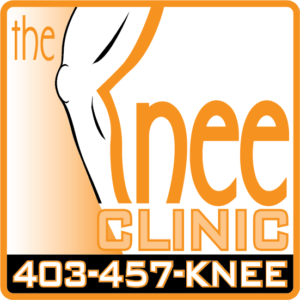Repetitive strain injuries: getting back to your activity
If you live an active lifestyle, chances are you’ve dealt with an injury at some point. You may have even heard this expression: repetitive strain injury.
Often, for athletes or those who enjoy leisure sports, the thing that keeps them out of the game is not a sudden injury. It’s an injury caused by consistent, repeated stress to the body’s muscles, tendons, nerves and other soft tissues.
“Repetitive strain injuries are among the most common problems we see,” says Dr. Dale Macdonald, Sport Specialist and Clinic Director at Elite Sport Performance in Calgary.
“People have a hard time not doing that physical activity they love.”
Macdonald understands that way of thinking. He and his colleagues in the clinic are all dedicated to their activities. He admits they can be a bit over-zealous at times, too. He notes, though, that doing something too long or too hard without adequate rest can easily sideline you from your favorite activity.
Here are the four most common repetitive strain injuries to watch out for. In each case, Elite Sport Performance Clinic can help.
Plantar fasciitis: “It hurts on the bottom of my foot and/or my heel.”
The plantar fascia is the thick connective tissue that supports the arch of the foot. It’s exposed to incredible impact every time we take a step, whether walking or running. Plantar fasciitis occurs when microscopic damage to the tissue causes inflammation of the plantar fascia and overlaying connective tissue sheath. Prolonged or repeated injury can create scar tissue as the body tries to ‘repair’ the injured area.
Achilles tendonitis: “It hurts at the back of my foot and just above my heel.”
The Achilles tendon connects the calf muscle to your heel. During the first stage of overuse, the Achilles tendon becomes inflamed. With prolonged, repeated stress, scar tissue can form, the tendon structure can change and the tendon can tear or rupture.
Patellar tendonitis: “It hurts below my knee.”
The patella is the kneecap covering the knee joint. Patellar tendonitis is an injury to the tendon that connects the kneecap to the shinbone. Symptoms include pain or aching in the front of the knee, and/or weakness or swelling in the area (during or after exercise). With Osgood-Schlatter’s disease, pain is closer to the shinbone. It’s not actually a disease, but an overuse injury and it’s very common in adolescents experiencing growth spurts. With Sinding-Larsen-Johannson syndrome, the pain or swelling is closer to the knee area.
IT band friction syndrome: “It hurts on the side of my knee or my outer thigh.”
The iliotibial (IT) band is the ligament that runs down the outside of the thigh from the hip to the shinbone. It primarily provides stabilization when running. IT band friction syndrome (sometimes called runner’s or jumper’s knee) occurs when the IT band rubs across the bony protuberance where it attaches to the knee. This friction causes irritation and swelling. The IT band can also be aggravated by muscle imbalance elsewhere in the body (weakness or tightness in other muscle groups) and poor pelvic muscle strength.
When to seek help
If a repetitive strain injury is caught early, healing can occur by avoiding or modifying an activity for a time. The problem, as Macdonald sees it, is that people may not stop their activity until the pain becomes unmanageable. That’s when they need to see a specialist.
“As a runner, when I am hurting, I just want to get going again,” Macdonald says. “But, pushing through an injury is not smart. If you want to return to an activity as quickly and safely as possible, you may need help getting there.”
Macdonald notes that repetitive strain injuries respond well to a number of different treatments.
For injuries in the early stages, treatment options include:
manual therapies such as Graston techniques or myofascial release techniques to break down scar tissue or overcome fascial restrictions and restore movement
active-release therapy, where soft tissues and muscles are massaged or put through a series of controlled movements
eccentric loading exercises, where a muscle is contracted and simultaneously lengthened
For stubborn or advanced injuries, treatment options may include:
shock wave therapy to reduce the size of the scar tissue
corticosteroid injection therapy to help minimize inflammation of connective tissue (but not scar tissue)
injection of platelet-rich plasma to encourage new tissue regeneration
In some cases, injury-specific treatments will be recommended, such as:
a custom orthotic that helps counter the pain of plantar fasciitis
exercises that focus on strengthening underlying muscle weakness or imbalances, like pelvis, hip flexor and abductor muscle strengthening when managing IT band friction syndrome
For active people – from runners to cyclists to golfers to yoga enthusiasts – Macdonald says there is always something that can be done for repetitive strain injuries. It’s a matter of seeing a specialist who can build a custom treatment plan that is matched to the patient’s body, the length of time they’ve had the injury and the type of activity they want to get back to.

